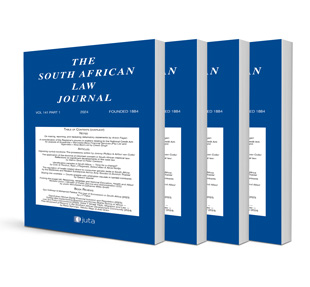
The Right of an ESTA Occupier to Make Improvements Without an Owner’s Permission After Daniels: Quo Vadis Statutory Interpretation and Development of the Common Law?
Authors E J Marais, G Muller
ISSN: 1996-2177
Affiliations: Senior Lecturer, Department of Private Law, University of Johannesburg; Senior Lecturer, Department of Private Law, University of Pretoria
Source: South African Law Journal, Volume 135 Number 4, p. 766 – 798
Abstract
In Daniels, the Constitutional Court had to decide whether the Extension of Security of Tenure Act 62 of 1997 (‘ESTA’) allows an occupier to bring about improvements on land without the landowner’s permission to make the occupier’s dwelling habitable. The ESTA would be in conflict with an occupier’s rights to tenure security (s 25(6) of the Constitution) and human dignity (s 10 of the Constitution) if it did not provide this right. Madlanga J, for the majority, ruled that this right flows from a natural and proper interpretation of the Act. This finding is unattractive from a single-system-of-law perspective, as it may undermine (instead of promote) the positive characteristics which the Constitution envisions for the whole legal system. We raise two objections against the majority judgment, which stem from the two fundamental principles of subsidiarity. In terms of the first criticism we argue that the majority judgment committed judicial overreach and subverted the rule of law, as it adopted a strained interpretation of s 5(a) of the ESTA by overemphasising the purpose of the Act and abandoning the textual threshold. In the process, the court ascribed vague requirements to s 5(a) which are foreign to the property context within which the ESTA operates, thereby obfuscating the relationship between the ESTA and the common law of unjustified enrichment. Under the second objection, which flows from the first, we argue that the court should instead have developed the common law of unjustified enrichment to come to the occupier’s assistance. This could have been done by expanding the categories of lawful occupiers who are permitted to bring about improvements on land without the landowner’s permission. From a doctrinal perspective the enrichment liability of the owner could then have been limited by the ‘unique relationship’ that exists between the owner and the ESTA occupier and could have been further circumscribed by the ius tollendi, the common-law definition, and the tests for necessary, useful and luxurious improvements. Such a development would have entailed a more principled solution to the case, one which would have promoted greater systemic coherence between the various sources of law applicable to the dispute.